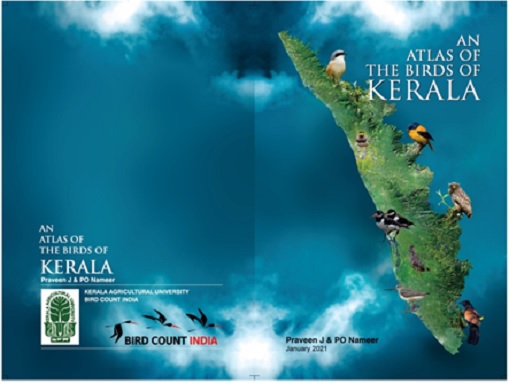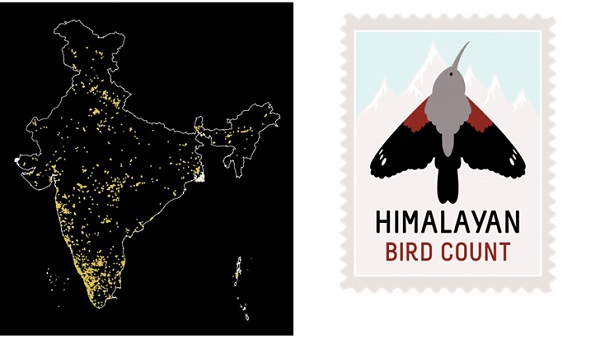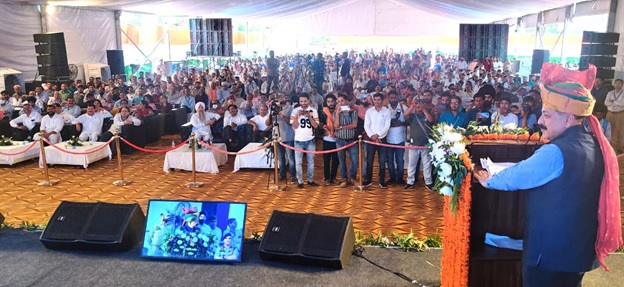
An atlas is a book or collection of maps. Some contain facts and history about geographic locations. Specialized ones deal with roads, history, astronomy, etc. Likewise, a bird atlas aims at mapping the distribution of a group of bird species across a country or a region. With the help of a comprehensive atlas one can map birds’ abundance patterns and measure how their distribution and abundance might have changed over time or since a previous atlas. It follows a standardized methodology and is often repeated at 20-year intervals. Since birds are excellent indicators of environmental health, bird conservation is of paramount importance.
Birds not only enrich our lives, but they also have ecological benefits, such as in pollination and pest control. Identifying and observing birds give immense pleasure to many. Children and young adults must be sensitized about them for conserving their environment and its protection.
In February 2022, Kerala got its first state bird atlas, perhaps Asia’s largest in terms of sampling effort, geographical extent, and species coverage derived from the aggregation of 25,000 checklists. The first of its kind in India, this has provided substantial baseline data about distribution and abundance of bird species across all major habitats.
As a citizen science-driven exercise, over 1000 volunteers took part in the Kerala Bird Atlas between 2015 and 2020 and participated in systematic surveys held twice over 60 days every year - during the wet (July to September) and dry (January to March) seasons. Kerala Bird Atlas surveys was completed on 13 September 2020. Survey results were presented at the British Ornithologists’ Union (BOU) Conference on 24 November 2021. This year the 10 February issue of Current Science has published a comprehensive article titled “Kerala Bird Atlas 2015–20: features, outcomes and implications of a citizen-science project” written by 125 authors. District-wise atlases for Alappuzha, Thrissur, Kannur, Kasaragod, Kottayam, and Kozhikode have also been published. Public Talks, and Conferences have been regularly conducted in the past few years at several locations across the country.
In 2018 Bombay Natural History Society (BNHS) initiated The Sálim Ali Bird Count, which was a birding event to commemorate the birth anniversary (12 November) of Dr Sálim Ali (1896-1987), the “Bird Man of India”. In 2020 and in 2021, the event was celebrated during 5-12 November in which birders across India participated. They were sent to visit the nearest Important Bird and Biodiversity Area (IBA) or any waterbody and carefully count birds they could spot for an extended period (over an hour). The findings were uploaded to the eBird mobile app, a global internet-based platform for collating observations of birds and maintaining records of sightings. It is housed in Cornell University’s Laboratory of Ornithology.

An atlas is a book or collection of maps. Some contain facts and history about geographic locations. Specialized ones deal with roads, history, astronomy, etc. Likewise, a bird atlas aims at mapping the distribution of a group of bird species across a country or a region. With the help of a comprehensive atlas one can map birds’ abundance patterns and measure how their distribution and abundance might have changed over time or since a previous atlas. It follows a standardized methodology and is often repeated at 20-year intervals. Since birds are excellent indicators of environmental health, bird conservation is of paramount importance.
In 2020, more than 26,000 checklists were uploaded by 2,926 birders, recording a total of 855 species. Out of these 855, an incredible diversity of nocturnal species was observed including almost 20 species of owls, 6 species of nightjars, and 1 frogmouth. It was found that birding was more spread in regions of Kerala, Jammu and Kashmir, Ladakh, Rajasthan, Bihar, Jharkhand, and coastal areas of Andhra Pradesh.
Bird Count India is an informal partnership of organizations and groups working together to increase the collective knowledge about bird distributions and populations. It has a Vision of creating a world in which key data and thereby knowledge needed to understand and conserve India’s birds are publicly available at the finest possible spatial and temporal scales. It aims to document the distributional range and the abundance of Indian birds, from the most refined scale (e.g., within a city) to the largest (across the country).
The Himalayan Bird Count was concurrently organised in India, Nepal, and Bhutan on 14 May 2022 jointly by Bird Count India, Bird Conservation Nepal, and the Royal Society for Protection of Birds, Bhutan. In India, birders from Ladakh, Jammu & Kashmir, Himachal Pradesh, Uttarakhand, North Bengal, Arunachal Pradesh, and Sikkim participated in the event.
During 18-21 February 2022, Great Backyard Bird Count (GBBC) India took place which was the Indian implementation of the global GBBC. Since 2013 Indian birders have participated in the GBBC. This annual event helps understand the distribution of birds across the country, how changes in habitat and weather affect the population of the birds, and checks if their populations and distributions change from year to year.
Mysore and Pune are the other cities that have their Bird Atlas. The Assam Bird Monitoring Network (ABMN) on 28 May announced its intention to start the Guwahati Bird Atlas (GBA). It will enlist bird watching enthusiasts to document bird species found in Guwahati. Few hotspots in the city have been identified, like Deepor Beel (a Ramsar wetland site) and Rani-Garbhanga Reserve Forest, where birders generally spot many birds. Birders will be mentored by Bird Count India and Kerala Bird Atlas.
It is about time school children were introduced to bird watching as a hobby, especially urban children, who do not have enough opportunity to be in nature and learn things that are often not covered in textbooks. They should be encouraged to prepare a bird atlas of their locality and be part of nature walks and serious birding activities.
India Science Wire
ISW/SM/BIRDATLAS/ENV/ENG/17/06/2022





